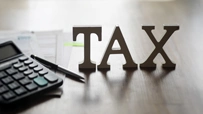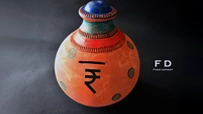How to Choose Between Callable and Non-Callable FDs
September 04, 2025

Over the past couple of years, Fixed Deposits (FDs) have regained their stronghold as the number one investment instrument - thanks to the rising interest rates and the security they provide. When we talk about FDs, we also talk about the liquidity they provide.
As in, FDs offer quick access to funds during financial emergencies, though at a certain penalty fee. Such Fixed Deposits are commonly known as callable Fixed Deposits. However, all of this changed in 2015, when RBI introduced another type of FD - non-callable Fixed Deposits.
In this blog, we have detailed the difference between callable and non-callable Fixed deposits, their pros and cons and which one should you choose.
What is a Callable Fixed Deposit?
A callable Fixed Deposit is similar to a regular FD where you can withdraw your deposit amount before the maturity date. The bank may charge a penalty fee for early FD withdrawal, which may go up to 1% (reduced interest).
Investors can also opt for overdraft facility or loan against FD with callable deposits. The minimum deposit amount could be as low as ₹1,000. All callable deposits up to ₹5 lakh are insured under DICGC (Deposit Insurance and Credit Guarantee Corporation) per depositor per account.
Point to note: Ujjivan SFB doesn't levy any penalty fee for withdrawals made after 6 months from the time of deposit.
Features and Benefits of Callable Fixed Deposits
1. Easy Access to Cash
You can withdraw your deposit amount before the maturity period. However, you may have to pay a penalty up to 1% for early withdrawals. Contact your bank to get better clarity of premature withdrawal charges.
2. Low Minimum Investment Requirement
Callable Fixed Deposits come with low deposit requirement. Generally, you can start investing in callable FDs with just ₹1,000. This gives flexibility to investors to choose their deposit amount as per their financial goals and capacity.
3. Flexibility in Deposit Tenure
Callable FDs don't have any lock-in period. The tenure usually ranges from 7 days to 10 years. Of course, you're not allowed to withdraw funds before 7 days, but there's no specific lock-in period as such.
4. Higher Interest Rates Compared to Savings Account
Such Fixed Deposits offer higher interest rates compared to Savings Account. This helps you maximise your savings if you stay invested for the long-term.
Point to Note: Ujjivan SFB offers high-interest Digital Savings Account, which you can open from the comfort of your couch.
5. Auto-Renewal Facility
You can opt for auto-renewal of your FD at the time of opening the account, meaning the maturity amount will get re-invested in the same FD for the same tenure. This may help investors achieve long-term growth.
What is a Non-Callable Fixed Deposit?
Non-callable Fixed Deposits are bank deposits that come with a lock-in period, meaning you cannot with draw funds before the FDs maturity. There are certain exceptions though including situations involving bankruptcy, court order, or the depositor's demise. Kindly check with your bank to understand the terms and conditions of non-callable FDs.
However, non-callable Fixed Deposits offer higher interest rates compared to callable FDs. Probably, that's the reason why the minimum deposit amount is usually ₹1 crore. The maximum deposit limit is ₹5 crore but for NRIs (Non-Resident Indians), as per RBI mandate, the deposits should be below ₹2 crore. .
Features and Benefits of Non-Callable Fixed Deposits
1. Higher Interest Rates
Non-callable Fixed Deposits offer higher interest rates compared to callable FDs. The interest rate may vary across banks. Kindly contact your bank to understand the prevailing interest rates.
2. Minimum and Maximum Deposit Requirement
Earlier, the minimum investment amount for non-callable FDs was ₹15 lakh. However, since October 2023, the RBI has raised the minimum deposit requirement to ₹1 crore. The maximum deposit limit is ₹5 crore for Indian investors and ₹2 crore for NREs.
3. Eligibility Criteria
Both NRIs and resident investors are eligible to invest in non-callable FDs. This increases the reach of the deposit allowing investors across borders to grow their wealth.
4. Fixed Deposit Maturity
The maturity period generally ranges from 1 year to 5 years. You're not allowed to withdraw funds before the maturity ends. There are certain exceptions for early withdrawals though based on specific situations. Kindly check with your bank for better clarity.
5. Auto-Renewal
As per RBI mandate, you cannot auto-renew non-callable FDs. Once your FD matures, the amount will be directly credited to your bank account.
Callable vs Non-Callable FD: Which One to Choose?
1. Assess Your Financial Goal
Start by identifying your financial goals and the timeframe within which you need the funds.
2. Deposit Capacity
You need to deposit a minimum of ₹1 crore to open a non-callable Fixed Deposit account. The required amount is significantly compared to callable FDs, which you can open with ₹1,000. So, clearly non-callable FDs are not for everyone. Mostly, NRIs and HNIs (High Net-Worth Individuals) opt for non-callable FDs to grow their wealth.
3. Lock-in Period
Assess your liquidity needs before booking an FD. If you want quick access to funds, callable FDs could be a better choice. Such Fixed Deposits don't come with any lock-in period and allows premature withdrawal of funds.
4. Interest Rates
Non-callable FDs offer higher interest rates compared to callable FDs. So, if your goal is to maximise your savings or grow your wealth within a short span of time, opening a non-callable FD could be a better choice.
Final Thoughts
Consider all these factors before booking a callable or non-callable Fixed Deposit. Any investment you make should be aligned to your investment goals. If in doubt, consult a registered financial adviser to make an informed investment decision.
Looking to grow your savings? Ujjivan SFB offers a wide range of fixed deposit products. Select the FD of your choice and take a step forward to your financial goals. Alternatively, you can browse through Ujjivan SFB product suite - our wide range of financial products are designed to make your financial life better.
Disclaimer:
The contents herein are only for informational purposes and generic in nature. The content does not amount to an offer, invitation or solicitation of any kind to buy or sell, and are not intended to create any legal rights or obligations. This information is subject to updation, completion, amendment and verification without notice. The contents herein are also subject to other product-specific terms and conditions, as well as any applicable third-party terms and conditions, for which Ujjivan Small Finance Bank assumes no responsibility or liability.
Nothing contained herein is intended to constitute financial, investment, legal, tax, or any other professional advice or opinion. Please obtain professional advice before making investment or any other decisions. Any investment decisions that may be made by the you shall be at your own sole discretion, independent analysis and evaluation of the risks involved. The use of any information set out in this document is entirely at the user’s own risk. Ujjivan Small Finance Bank Limited makes no representation or warranty, express or implied, as to the accuracy and completeness for any information herein. The Bank disclaims any and all liability for any loss or damage (direct, indirect, consequential, or otherwise) incurred by you due to use of or due to investment, product application decisions made by you on the basis of the contents herein. While the information is prepared in good faith from sources deemed reliable (including public sources), the Bank disclaims any liability with respect to accuracy of information or any error or omission or any loss or damage incurred by anyone in reliance on the contents herein, in any manner whatsoever.
To know more about Ujjivan Small Finance Bank Products Visit:"https://www.ujjivansfb.in"
All intellectual property rights, including copyrights, trademarks, and other proprietary rights, pertaining to the content and materials displayed herein, belong
to Ujjivan Small Finance Bank Limited or its licensors. Unauthorised use or misuse of any intellectual property, or other content displayed herein is strictly prohibited and the same is not intended for distribution to, or use by, any person in any jurisdiction where such distribution or use would (by reason of that person’s nationality, residence or otherwise) be contrary to law or registration or would subject Ujjivan Small Finance Bank Limited or its affiliates to any licensing or registration requirements.
FAQs
1. Is non-callable FD choice better for retirement saving?
It depends on your investment goals. You can use both callable and non-callable FDs for retirement savings.
2. Is it possible to convert a non-callable FD into a callable FD?
Converting a non-callable FD into a callable FD may not be possible once you have made the initial investment. It's important to choose the right type of FD from the beginning.
3. Is callable FD a riskier choice than non-callable FDs?
Callable fixed deposits offer higher liquidity but may have lower interest rates compared to non-callable fixed deposits. The risk depends on your financial goals and needs.
4. Which bank offers the best Fixed Deposit interest rate?
Ujjivan SFB offers higher FD interest rates compared to traditional banks. You can check the latest interest rates here.
Latest Blogs

Capital Adequacy Ratio (CAR): Meaning, Formula, and RBI Norms
Banks run on trust — but trust alone cannot guarantee stability. A sudden surge in bad loans or a market shock can quickly weaken even the largest institutions.

ITR Filing Penalties: What You’ll Pay in Fees, Interest, and Compliance Costs
The Income Tax Department extended the ITR filing deadline for FY 2024–25 to September 15, 2025, giving taxpayers a second chance after the original due date lapsed.

Marginal Tax Relief for FY 2025-26: How India’s New Rule Helps You Save Income Tax
The Union Budget 2025 introduced a major income tax relief for the middle class – making annual incomes up to ₹12 lakh completely tax-free* under the new regime.

APK Fraud: How One Wrong Download Could Empty Your Bank Account
Picture this. You’re sipping your evening tea when your phone rings.

Gold Loan LTV Ratio Explained (75% to 85%): What It Means for Borrowers
In June 2025, the Reserve Bank of India (RBI) introduced a significant relaxation for gold loan borrowers: the maximum Loan-to-Value (LTV) ratio for loans below ₹2.5 lakh was raised to 85%, up from the long-standing cap of 75%. Loans between ₹2.5 lakh and ₹5 lakh can now go up to 80%, while loans above ₹5 lakh continue under the 75% ceiling.





